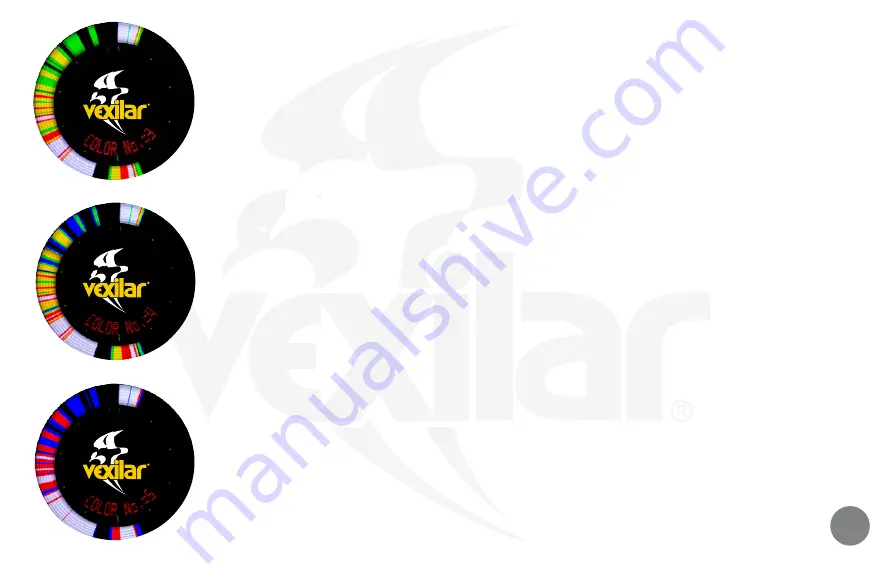
57
Color Mode 3: White, Red, Yellow, Green (Default)
While color setting #2 limits some of the signals that are displayed, color option #3 does the opposite. Green once
again represents the weakest signal, yellow stronger signals, red now shows the
second
to the strongest, and finally
white represents the strongest signals. It is often called a “Christmas Tree” because of the wide variety of colored
lights you will see when fishing over a large group of fish. When you see a fish in red turn to white, you know the
fish is inches from your lure. The advantage of the four-color setting is seeing more individual targets, which might
be too confusing to some, but you will gain the ability to target specific fish.
Color Mode 4: White, Red, Yellow, Green, Blue
In all other color modes, filtering is used to limit the total signal level shown on the display. The micro-processor
decides when a target is worthy of your attention or not. The five-color option turns all filtering off to show you
nearly every signal possible. The dynamic range of colors allows
you,
not the computer, to interpret the sonar
signals. On one hand, you might think having all this information is a good thing, but if you can see the curl of
your fishing line as a blue signal in the display, are you happy or just confused? To skilled flasher anglers, having five
colors gives you more advanced warning of nearby fish, better understanding of fish attitudes and even indication
of whether or not your bait is still on the hook. Give it a try and see if you like it.
Color Mode 5: White, Red, Blue
Designed to function
exactly
like color option #1, but helps people who are color blind and have difficulty
distinguishing the red/yellow/green color palette. Setting #5 is an alternative that has proven to be much easier to
use for these people. Blue replaces green as the weak signal color, red replaces yellow as the medium strength color,
and white represents the most intense sonar signals. Anyone can use this color option.
Содержание FL-18
Страница 2: ......






























